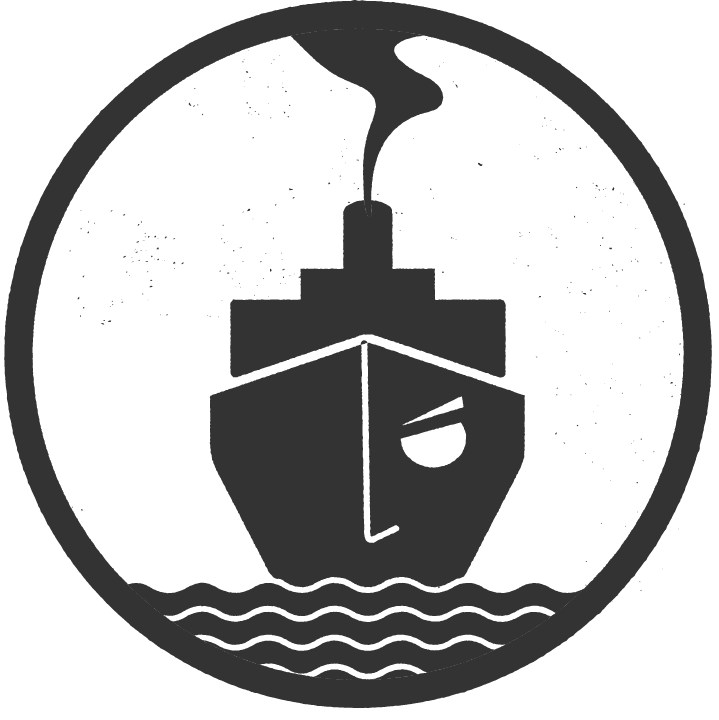how do you identify burrowing animal holes24 Apr how do you identify burrowing animal holes
Tip 3: Rabbits usually dig and cover with leaves, fur, and grass. Rabbit warrens are especially common on slopes and banks, where drainage is better. Wildlife Informer is reader-supported. The hole in your garden could also be from an earthworm. Each animal will have its own entrance hole, however. This article was co-authored by wikiHow staff writer, Luke Smith, MFA. Earthworms can also disturb the soil, especially if theyre plentiful. Rat: Holes tend to be 2-3 inches wide and smooth from repeated use. You can even use detergent and castor oil and spray them all over to keep the burrowing animals away. Woodchucks in the Garden. Humans are the largest cause of raccoon mortalities, so if you have raccoons in your yard, do your best to live capture and release or call in a professional. We have guides to gardening for wildlife and feeding garden visitors. They might also chew up electric wiring or destroy sprinkler systems. Often hole size can help in identification. Last year there was a similar yet smaller hole (same time of year). The reason that rats can fit into such small holes is that they have long bodies, flexible and cylindrical shaped. Below are some common animal burrows, see if you can recognise the burrow and then match it up with the occupier. This is a guide to the common animals that can cause holes in your yard and how to handle them when they appear. advice about making your garden more appealing to mammals, How to identify swallows, swifts and martins. Rabbit burrows, also called rabbit holes, have a main entrance surrounded by a mound of dirt that leads into an often complex series of underground chambers. Lot's of animals burrow in the desert. The hole is larger than a milk carton top and smaller than a tin - some size in between. wikiHow, Inc. is the copyright holder of this image under U.S. and international copyright laws. The best way to prevent this is to install fences and take preventative measures where possible. Stunning examples of photographs taken with the Museum's scanning electron microscope (SEM). See how rabbits don't just live in holes, they also climb trees. There may be another hole of similar size within 20 feet. Over time, you learn more about their behaviours and life histories. 1 inch diameter, soil thinly scattered around hole, edge of the yard: cicada killer wasp. How do you identify burrowing animal holes? Even if theyre close to human activity, solitary wasps that dig have the ability to sting, but wont unless handled or threatened. Luke Smith is a wikiHow Staff Writer. The diameter of a burrow entrance reveals a lot about the animal that is living inside. The insects are placed in the hole and a single egg is deposited before the female seals the plug, never to return. Squirrel burrows have an average opening of 4 inches in diameter and can be interconnected through underground tunnel systems with multiple entrance and exit holes. Diagnosing Holes in the Yard This guide helps diagnose what's digging, tunneling, feeding, and otherwise disturbing turf grasses. This image may not be used by other entities without the express written consent of wikiHow, Inc.
\n<\/p>
\n<\/p><\/div>"}, {"smallUrl":"https:\/\/www.wikihow.com\/images\/thumb\/8\/8c\/How-Do-You-Identify-Burrowing-Animal-Holes-Step-10.jpg\/v4-460px-How-Do-You-Identify-Burrowing-Animal-Holes-Step-10.jpg","bigUrl":"\/images\/thumb\/8\/8c\/How-Do-You-Identify-Burrowing-Animal-Holes-Step-10.jpg\/v4-728px-How-Do-You-Identify-Burrowing-Animal-Holes-Step-10.jpg","smallWidth":460,"smallHeight":345,"bigWidth":728,"bigHeight":546,"licensing":"
\u00a9 2023 wikiHow, Inc. All rights reserved. Look for the animal or its tracks to confirm what animal is using the site. It will hopefully help you save the furbabies. If it doesn't, keep reading. Fresh food remains are usually only found outside the holes from April to June, when cubs are present. Holes That Are Homes Small, shallow holes are often evidence of foraging by grey squirrels and armadillos, but some of the holes you will find in your yard are the homes of critters. Fencing offers the only viable way to protect plants from woodchucks. Complex series of chambers and interconnected tunnels with multiple entrances. Correctly Identifying Gophers, Groundhogs & Prairie Dogs Prairie dogs, gophers and groundhogs are all rodents, and all of them like to dig, creating burrows and tunnels. Find a Pro +. In the end, holes are particularly tricky to identify and there are always exceptions to the rules, depending on the species. To further narrow down the small animal that created the burrows, you have to analyze the entrance and land around it. Earthworms do contribute to a rough and bumpy lawn that may be less than aesthetically pleasing, but this can be easily solved by reseeding your lawn with a local species thats better suited to the site. We also share helpful tips and guides on a variety of topics related to animals and nature. Mouse hole Bank voles, wood mice and yellow-necked mice can dig extensive burrow systems, often under tree roots. This image is not<\/b> licensed under the Creative Commons license applied to text content and some other images posted to the wikiHow website. It is recommended that you use a inch by inch mesh when blocking entry hole as wire mesh with 1 inch by 1 inch holes would not be proof against small rats. This indicates the presence of intricate tunnels beneath the surface that can better irrigate the soil while decreasing surface water runoff. #10. Common Signs. % of people told us that this article helped them. If the hole reappears, then you know you have to excavate the area to locate the cause of the problem. Spray detergent and castor oil. While iguanas are not usually aggressive toward people, they do pose a threat to a smaller animal. If the newspaper is removed at night, you are dealing with a nocturnal animal, such as an opossum, raccoon, or skunk. If you have skunks, youll most likely know from the distinctive musky smell they use to mark territory. This image may not be used by other entities without the express written consent of wikiHow, Inc.
\n<\/p>
\n<\/p><\/div>"}, {"smallUrl":"https:\/\/www.wikihow.com\/images\/thumb\/c\/cf\/How-Do-You-Identify-Burrowing-Animal-Holes-Step-3.jpg\/v4-460px-How-Do-You-Identify-Burrowing-Animal-Holes-Step-3.jpg","bigUrl":"\/images\/thumb\/c\/cf\/How-Do-You-Identify-Burrowing-Animal-Holes-Step-3.jpg\/v4-728px-How-Do-You-Identify-Burrowing-Animal-Holes-Step-3.jpg","smallWidth":460,"smallHeight":345,"bigWidth":728,"bigHeight":546,"licensing":"
\u00a9 2023 wikiHow, Inc. All rights reserved. Usually looking for curl grubs (larvae of scarab beetles), the bandicoot aerates the soil and assists with organic mixing of the soil. River otters will burrow in or near the water, and might not be as easily spotted as other dens. We would also need to know where the structure was found (in a garden, near a national park and where in Australia it was found). In this section, explore all the different ways you can be a part of the Museum's groundbreaking research, as well as come face-to-face with our dedicated staff. This image may not be used by other entities without the express written consent of wikiHow, Inc.
\n<\/p>
\n<\/p><\/div>"}, {"smallUrl":"https:\/\/www.wikihow.com\/images\/thumb\/d\/d2\/How-Do-You-Identify-Burrowing-Animal-Holes-Step-12.jpg\/v4-460px-How-Do-You-Identify-Burrowing-Animal-Holes-Step-12.jpg","bigUrl":"\/images\/thumb\/d\/d2\/How-Do-You-Identify-Burrowing-Animal-Holes-Step-12.jpg\/v4-728px-How-Do-You-Identify-Burrowing-Animal-Holes-Step-12.jpg","smallWidth":460,"smallHeight":345,"bigWidth":728,"bigHeight":546,"licensing":"
\u00a9 2023 wikiHow, Inc. All rights reserved. wikiHow, Inc. is the copyright holder of this image under U.S. and international copyright laws. This hole looks bigger than I would think bees would make - but I might be wrong. 6. They can easily chew through wood, plastic, aluminum, and in some cases even concrete to create entry holes where none existed. Common Wombat. Rats build burrows from their nest to their food source but can also use them as an escape route. Soil composition is another tool that can be used to help us identify what type of animal created the hole. Any scent-based repellent must be reapplied when the scent fades, such as after it rains. Small predators, such as stoats and weasels, often live in holes stolen from their prey, and even pine martens have been recorded living in badger setts. I don't think there are any decent resources out there. Fossils are a part of our natural heritage and while the vast majority of fossils found by amateur collectors are worth very little in monetary terms, they may be important scientifically. There are several different types of animals that will burrow, from large to small, and these dens can be found in a range of habitats. They, too, leave behind mounds or clumps of soil in a homeowners lawn or garden. She says desert animals are conscious of human . next post. Find out what people have been asking about the most. For example, if a hole is on the side of a riverbank, youre likely dealing with a semi-aquatic animal like a crayfish. The Pocket Gopher is a species of conservation concern due to shrinking habitats, and only efforts to reduce or dissuade their presence on your yard should be considered. How do you identify burrowing animal holes? Have you seen any unusual mammal homes recently? You can trap voles with simple mousetraps positioned in their runs near the burrows, whereas you'll need larger,. Holes that are similar in size to silver dollars likely belong to chipmunks, and these small animals are likely to be spotted going in and out throughout the day. Get free, no-commitment project estimates from pest control and wildlife removal services near you. This normally goes unnoticed as it happens underground. Size. Wood mice dig burrows in cereal fields and similar open situations. A woodchuck, or groundhog, burrow can often be recognized by what looks like a dirt porch, and these animals can be seen wandering around during . Gophers leave behind more of a mess than groundhogs and voles, tearing up grass and uprooting plants. Another reason theyll dig is, like the skunk, in search of food. Scat (poop) and footprints can help identify burrows of larger mammals. wikiHow, Inc. is the copyright holder of this image under U.S. and international copyright laws. Skunks usually cause damage to lawns in search of insect larvae, and they do so with a very distinctive rolling of the sod to get underneath. Share 0. previous post. Some hints and tips for beginners to help improve your wildlife photography. These are called worm casts. This image may not be used by other entities without the express written consent of wikiHow, Inc.
\n<\/p>
\n<\/p><\/div>"}, 9 Effective Ways to Get Rid of Stickers in Your Yard, How to Diagnose Animal Holes in Your Yard, https://www.walterreeves.com/insects-and-animals/diagnosing-holes-in-the-yard/, https://henderson.ces.ncsu.edu/2020/07/holes-in-the-yard/, https://education.nationalgeographic.org/resource/burrow, https://wildlife.unl.edu/damage-management, https://extension.colostate.edu/topic-areas/natural-resources/burrowing-animals-determining-species-by-burrows-damage-6-521/, https://hgic.clemson.edu/factsheet/holes-in-the-lawn/, https://www.britannica.com/animal/chipmunk. The BBC is not responsible for the content of external Internet sites. Avoid putting dense mulch too close to trees and shrubs. They often have a mound of excavated soil at the entrance. A significant invasion of moles might indicate the presence of other soil pests. Once a homeowner knows what kind of animal is digging holes in their yard, they can call an expert wildlife removal technician or pest control professional to properly keep the critters away. When you click and buy we may earn an affiliate commission at no cost to you. Feb 21, 2013. Please do not disturb wild animals in their burrows and remember to follow the Countryside Code when out and about. Ever wondered which animal has made small holes in the ground? Moles also tend to destroy the roots of plants and can damage a buildings foundation. There are many species of animals that dig holes in yards, and oftentimes theyre perceived as pests and something to remove. If the animal has made tunnels that raise the soil but don't break through it and you can't see the entrance of the hole a mole is probably digging in your backyard. You can reduce vole populations by regular mowing in order to reduce coverage for them, but this is only really recommended in areas of high vole populations that are actively causing issues. How to Identify Underground Rodents Burrowing in Your Yard. However, Trapdoor Spider burrows can have a lid or be completely open with a collar of silk around the entrance. Gemstones are prized for their beautiful colours and patterns and are used in a range of applications including jewellery, decorative items and as important features of mineral collections. This website uses cookies to ensure you get the best experience onourwebsite.
Are Shock Collars Illegal In Texas,
Healy Foundation New Mexico,
Kate Welshofer Wedding Date,
How To Pronounce Kinich Ahau,
Is Michael Norman Married,
Articles H



